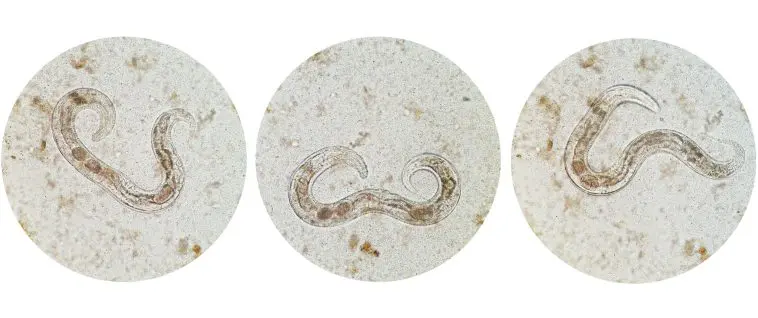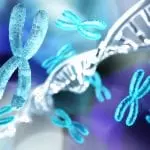[Originally published as the second part of Why is Nature So Evil?]
While we at New Creation affirm that moral sin is the root cause of Natural Evil, it is worth evaluating other explanations to see if they hold theological and scientific merit. We will begin with the theistic evolutionists before turning to old-earth creationists.
Theistic Evolution’s Answers
In particular, the problem of Natural Evil is greatest for the theistic evolutionist. BioLogos, a Christian organization that defends evolution, presents several options for the concerned Christian.
- Perhaps there was an angelic fall prior to the fall of Adam.
- Perhaps animals do not feel pain at all, and thus what appears to be Natural Evil is not evil at all.
- Maybe Natural Evil is necessary to make a planet with natural good, and the good ultimately outweighs the bad.
Ultimately, BioLogos admits “None of these ‘solutions’ to the problem of natural evil is fully satisfactory… In the end, we must admit that now we see through a glass darkly and do not completely understand.”1 Theistic evolutionists are unable to refer to the biblical explanation for evil (the Fall) as a solution to the problem. Instead, they resort to trusting that Natural Evil has some divine purpose yet unknown.
Another theistic evolutionist, the late Francisco Ayala, embraced Natural Evil as a “gift” for Christianity. He proposes that natural selection solves the problem of Natural Evil for the Christian evolutionist.2 He claims it demonstrates that selection — which presupposes death, disease, and parasitism — is the means by which God created the world.
Natural Selection metaphorically washes God’s hands of the guilt of creating the world with Natural Evil. Instead, selection necessitates death and disease as part of the evolutionary process. Rather than attempting to rationalize the chronology of sin and Natural Evil, Ayala explains away the problem by treating evolution as necessary to God’s creative plan.
Old-earth Creationists’ Answers
Some who believe in an old earth reject Darwinian evolution. Thus, they seek an alternative means of explaining how death and suffering could pre-date human sin. William Dembski, a popular proponent of Intelligent Design, suggested that Genesis records two creation events. The first is the 6-day creation in Genesis, and the second is the creation of the garden of Eden. Adam’s sin corrupts both creations, the first creation retroactively, and the second creation proactively.3
In this view, God created the original creation with Natural Evil, but only because He knew that one day Adam would sin. In the second creation, when God placed Adam in the garden, Adam’s sin showed that God’s foresight was correct. Adam’s punishment was banishment from the garden. God cast him out into the sinful, evil world; a world for which his sinful act is responsible.
By referring to God’s omniscience, Dembski claims to “show that you don’t need to be a young-Earth Creationist to maintain a traditional view of natural evil–the traditional view being one that sees natural evil as a consequence of moral evil and the fall.”4 While this view maintains that Natural Evil comes from Moral Evil, it also requires massive bends in logic which acrobatically avoid a straightforward reading of Genesis.
Did animals hunt and kill each other in the pre-fall world?
Perhaps more moderately, the great Christian mathematician John Lennox proposes that only animal death existed before the Fall.
Disease, infanticide, cancer, and any other form of evil is a result of sin, but he believes death “as part of the cycle of nature” was present in the original creation.5 Lennox suggests that the venom in the snake and defense mechanisms in prey species demonstrate that predation was part of God’s original plan.
While this approach is certainly more biblically founded, it fails to take into account the diseases and parasitism found in the fossil record (which under his view would likely be pre-Fall). On another note, Lennox does little to help out those poor baby impalas in the Garden of Eden.
Were Animals Designed to Kill?
Not much needs to be said for the young-earth creationist view of Natural Evil, which by Dembski’s own admission easily solves the problem. Traditional theology, straightforward interpretation, and other Scriptures support the view that man’s sin introduced Natural Evil into the world.
Genesis 1:29 says God originally gave vegetation to all animals for food. The abundance of fossil fuels (which are preserved organic material from the past) suggests that marine algae and plant material were abundant in the original creation.6 Isaiah 11:6–8 indicates that predation will not exist when God restores the earth, perhaps reflecting the original creation of God in the garden.
But while a straightforward and historical reading of Genesis is theologically satisfying, creationists still have lots of questions to answer.
If Natural Evil did not exist at the beginning of creation, how do we explain the inherent designs in animals that allow them to hunt food, tear flesh, and poison other animals? What about the teeth of the tiger, the venom of the snake, the toxins in dart frogs, and the baleen in whales? Did these animals have these features in the beginning, and abstain from using them? Or did they obtain them in the post-flood world?
Young-earth Creationists’ Answers
Bacteria are best known for being pathogenic, meaning they make you sick. But in reality, the percentage of harmful bacteria is less than 1%. Some creationists speculate that all bacteria were created to perform healthy tasks, and only some adapted to cause disease after Adam’s sin. In his book The New Creationism, Paul Garner suggests that the answer could be both.
As creation research continues to discover ways animals have adapted and changed based on pre-existing genes engineered in the organism, it becomes increasingly more likely that God programmed into His creation features that were not expressed until after the Fall.7
In this view, the corruption of the world stimulated animals to rapidly adapt to a world with predation, expressing traits that until then were hidden within the animals at creation. One specific statistic that supports this is that less than 1% of all microbes cause disease, while most perform vital functions such as decomposition and recycling nutrients.8 It is not difficult to imagine that before the Fall, those pathogenic bacteria also performed these helpful tasks.
On the other hand, it is also likely that some traits were present in the pre-Fall world, only they were for benevolent reasons. Parasites, for example, could have had mutual relationships with other species and then adapted to exploit their host organisms after the Fall. This explanation can apply to many structures, designs, or features that, with only slight modifications, can be used for the benefit, rather than detriment, of other organisms.
Oxpeckers are birds that remove ticks and other parasites from large mammals. However, they sometimes open wounds to suck the blood of their unsuspecting hosts. Creationists suspect that parasites did not behave in damaging ways in the original creation, and only learned to feed off their hosts after the Fall.
In the End: A Theological Win for Creationism
Ultimately, the Fall set into motion many drastic changes in creation. It introduced death, disease, genetic mutations, starvation, selection pressure, cheating, and scavenging, and animals immediately adapted and changed drastically in response to these changes.
Anything and everything was free game after the Fall, and biology demonstrates that the results can be intricate and staggeringly complex. Though there are some tough cases for creationist researchers to solve, the answers our perspective provides are far more satisfying than the logically acrobatic and theologically contradictory explanations offered by old-earth creationists and Christian evolutionists.
For atheists, Natural Evil is nothing but brute fact, neither morally good nor bad. A leopard eating a newborn impala is a biological reality and nothing more. But this view inherently does not sit well with the human experience. Even if you can excuse animal death as part of the circle of life, other “biological realities” such as disease, infanticide, parasitism, and forced copulation are more difficult to embrace. In other words, they are not the way things should be. They are not natural, but nature corrupted.
Christians who accept the conventional scientific timeline must come to terms with Natural Evil as part of God’s original creation. In this brief overview of the topic, we have seen several attempts to harmonize the existence of Natural Evil with a “very good” creation. These various interpretations are awkward, unconvincing, and in clear opposition to a natural reading of Genesis.
Traditional theology reveals that if we read Scripture without allowing current scientific theories to influence our interpretation, Genesis teaches that Natural Evil is a direct result of Moral Evil. As young-earth creationists, we get to affirm this truth without hesitation, as we look forward to a day when the lion and the lamb — and the leopard and the impala — will sit together in harmony.
Footnotes
- Otis, J. M. A Biblical DEFENSE OF YOUNG EARTH.
- Dembski, William A.. “How Can We Make Sense of Natural Evil?” From A Comprehensive Guide to Science and Faith. 2021.
- Biologos. “Is Animal Suffering Part of God’s Original Plan?” 2023.
- Ayala, F. J. (2007). Darwin’s gift to science and religion (Vol. 40). National Academies Press.
- Dembski, William A.. “How Can We Make Sense of Natural Evil?” From A Comprehensive Guide to Science and Faith. 2021.
- Ditto.
- Lennox, J. (2019). Can Science Explain Everything? The Good Book Company.
- Mortenson, Terry (2012). “The Fall and the Problem of Millions of Years of Natural Evil.” Answers in Depth. Vol. 7.
- Garner, Paul (2009). The New Creationism. Evangelical Press (1st Ed).
- Ditto.







